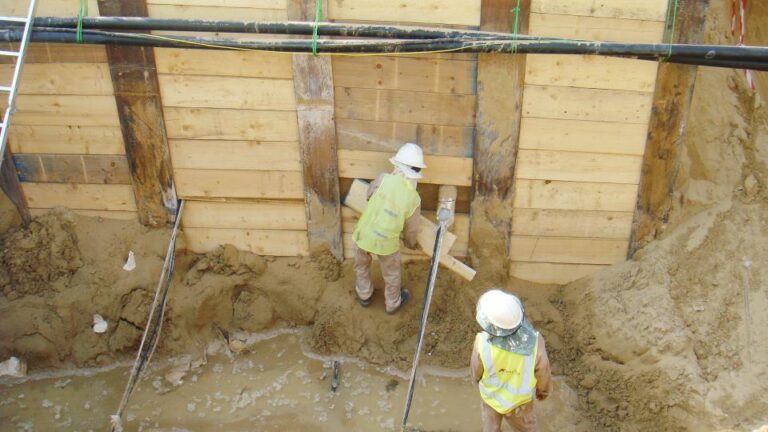Soldier pile and lagging walls are some of the oldest forms of retaining systems used in deep excavations. Soldier pile walls have successfully being used since the late 18th century in metropolitan cities like UK, Berlin, and London. The method is also commonly known as the “Berlin Wall” when steel piles and timber lagging is used. Alternatively, caissons, circular pipes, or concrete piles can also be used as soldier piles but at an increased cost. Timber lagging is typically used although reinforced concrete panels can be also utilized for permanent conditions. Soldier pile walls are formed by:
1. Constructing soldier piles at regular intervals (6 ft to 12 ft, typical)
2. Excavating in small stages and installing lagging.
3. Backfilling and compacting the void space behind the lagging.
Moment resistance in soldier pile and lagging walls is provided solely by the soldier piles. Passive soil resistance is obtained by embedding the soldier piles beneath the excavation grade. The lagging bridges and retains soil across piles and transfers the lateral load to the soldier pile system. Soldier pile and lagging walls are the most inexpensive systems compared to other retaining walls. They are also very easy and fast to construct.



